How to overwinter delphiniums – act now to protect your plants from excess rainfall, strong winds and cold snaps
A little preparation now will pay off in spring and summer for these statuesque blooms
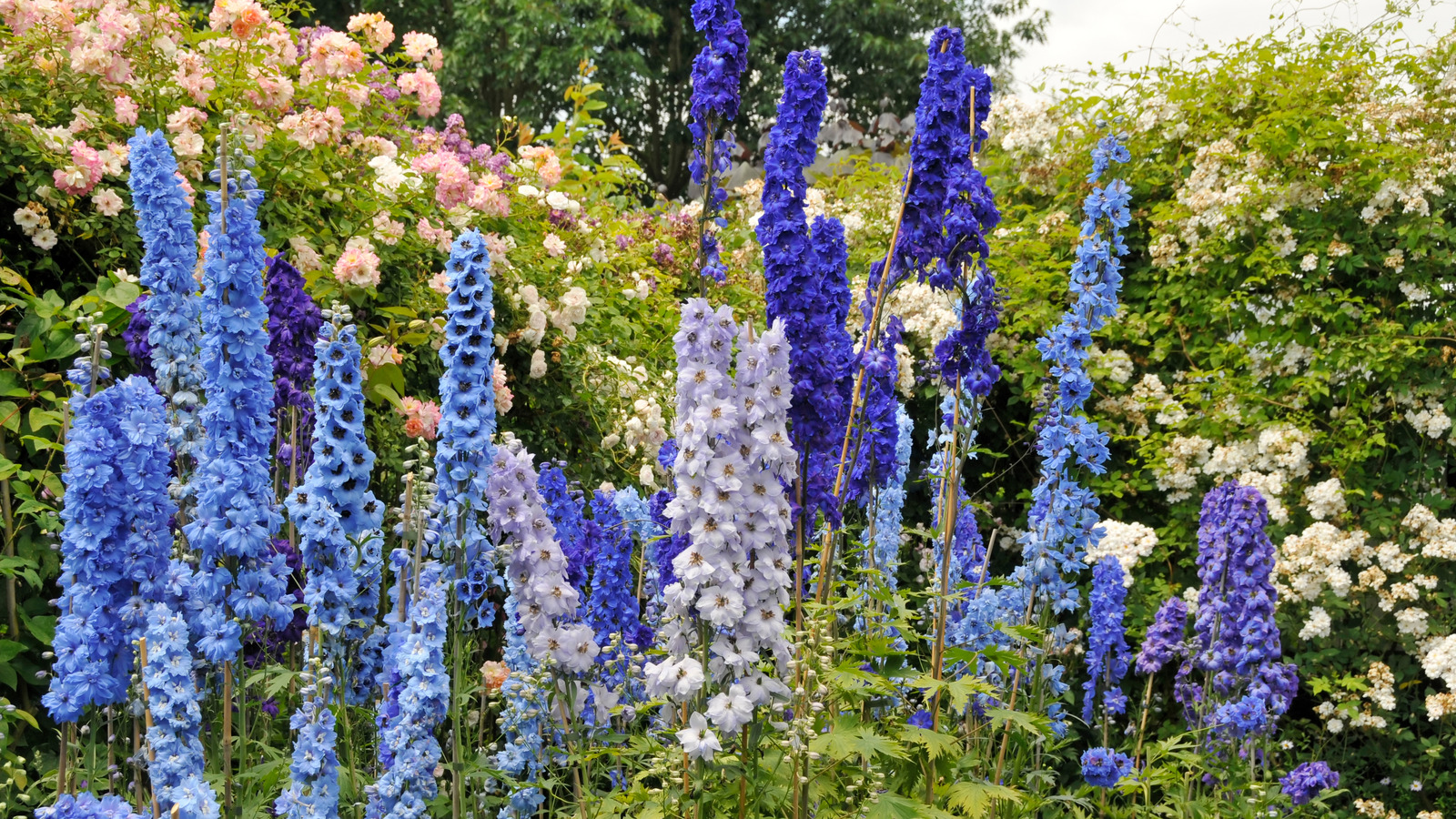

Beautiful in the garden and as cut stems in a vase, delphiniums are loved for their strikingly tall flower spikes and rich array of colors. These hues range from the palest blue through to rich, deep purples, as well as shades of pink, lilac, and white.
If you live in a chilly zone and know how to overwinter a garden, you may well have cut your delphiniums back already. Yet protecting them through the colder months doesn't stop there.
Although hardy perennials, these pretty plants will benefit from a little extra protection to see them through to spring. Learning how to overwinter delphiniums is a simple and straight-forward task with big wins. Here's what gardening experts suggest.
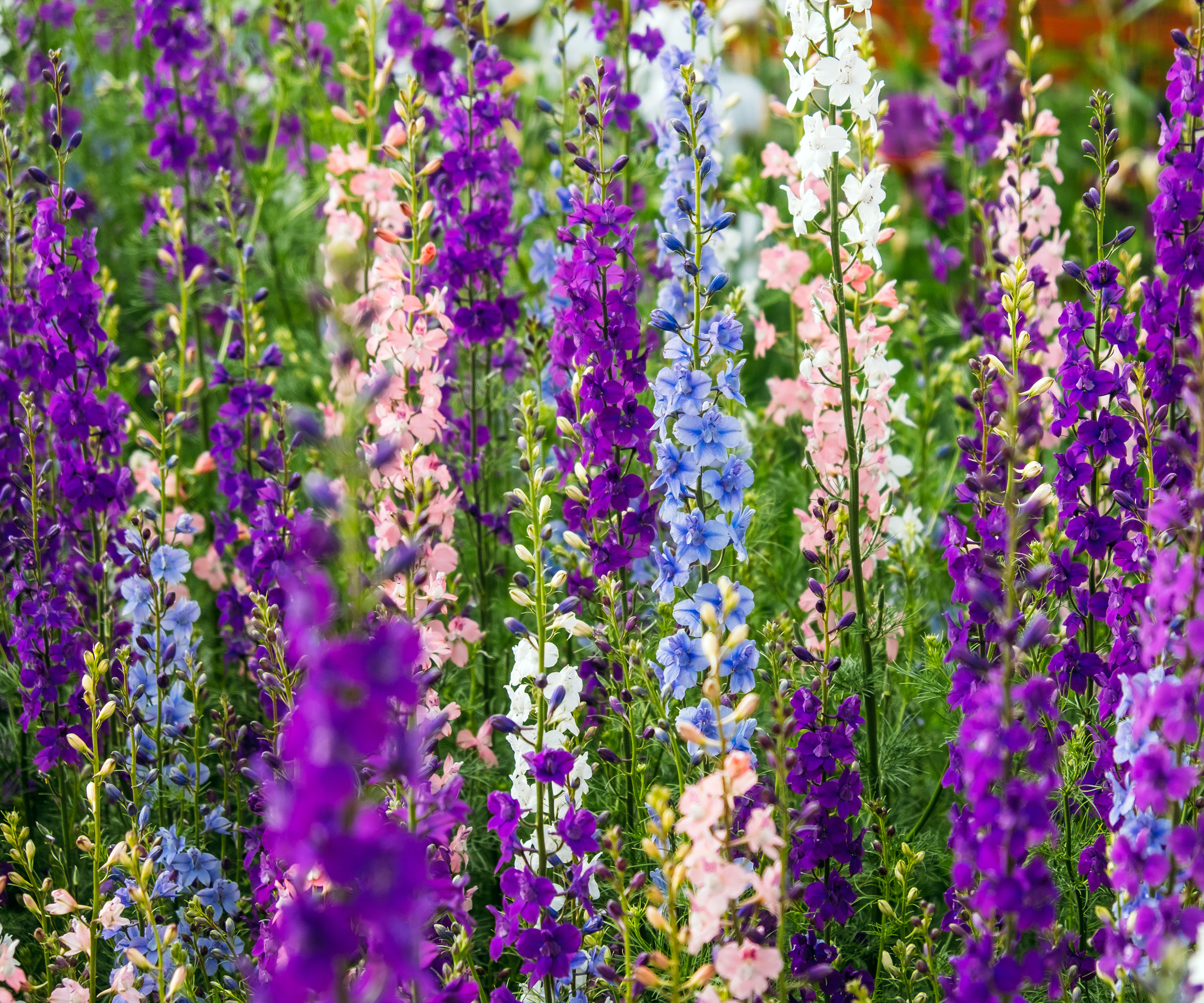
Expert advice on how to overwinter delphiniums
'Delphiniums are superstars of the cottage garden,' says Amy Yarger, Senior Director of Horticulture at Butterfly Pavilion. 'They provide eye-catching color and vertical interest in the summertime. Bees, especially bumble bees, are attracted to the flowers, and hummingbirds and butterflies will also visit them for nectar.
'Delphiniums prefer moderate climates – not too warm and not too cold. They grow and look their best in moist, cool, moderate climates and tend to suffer in areas with dry heat. Although, depending on the species and varieties, delphiniums can survive winter temperatures down to -40 F.'
'Delphiniums are quite hardy all the way down to USDA zone 3,' says Kat Aul Cervoni, landscape designer and founder, Staghorn Living NYC. 'Although, it’s critical to overwintering delphiniums for gardeners in US Hardiness zones 7 through zone 3, due to the typically cold winters and low temperatures.
'Generally, not winterizing them can result in poor growth and blooming the following year and possibly the plant even dying.'

Amy Yarger is the senior director of horticulture at Butterly Pavilion. She currently leads Butterfly Pavilion’s local pollinator habitat initiatives, which restores habitat in urban and suburban green spaces in Westminster and Broomfield. Amy has also installed pollinator habitat gardens throughout the community. Through habitat gardening and education, Amy hopes to create a closer connection to nature and a greater understanding about the need for biodiversity locally and globally.
1. Cut your plants back
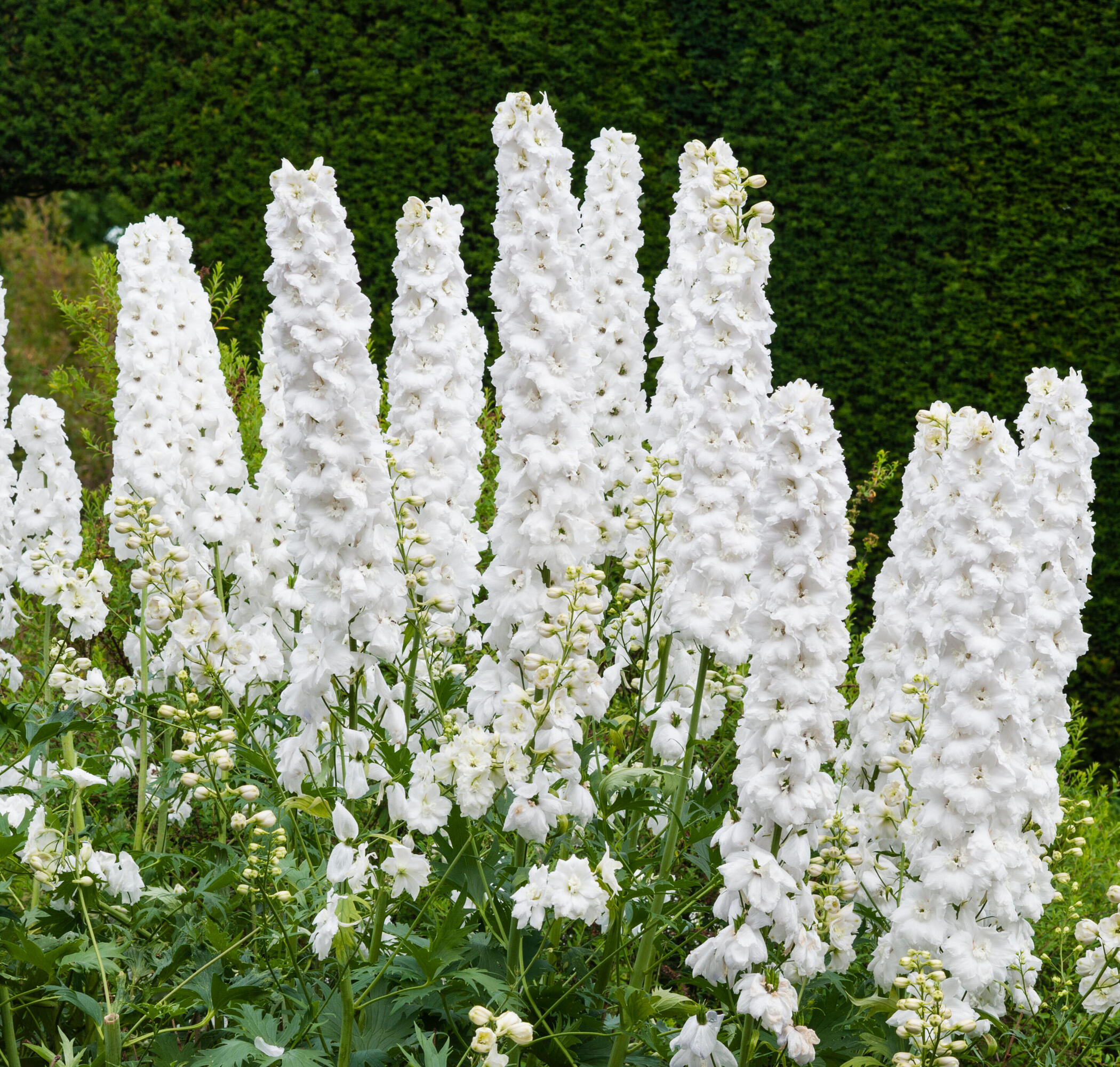
Whether you grow your delphiniums in beds, borders or as cutting garden flowers, the winter preparation is similar. Although, these hardy perennials can tolerate some frost, they do not like to sit for long periods in soggy soil and, due to their height, can be vulnerable to high winds.
'Firstly, I recommend trimming the stems down to just a few inches above the ground right after the first hard frost,' says Kat Aul Cervoni. 'November is a good time to do this. Clear away the dead foliage as it minimizes the risk of disease and pests.
'Leaving dead stems and foliage on the plant or around its base increases moisture retention, which can promote rot and fungal diseases, like powdery mildew or crown rot, which may overwinter in the plant debris, affecting the health of the plant the following season.'
'Pruning tidies up the plant and reduces the risk of disease and pest infestation while helping prepare the plant for healthy spring growth,' says Daniel Eginton, founder, Daniel Eginton Landscape Architecture.
'Once any remaining stems have been cut down to around 6 to 8 inches in height, there is no need to stake the plants,' adds Amy Yarger.
A pair of heavy duty hand pruners like these from True Leaf Market should make light work of the task.
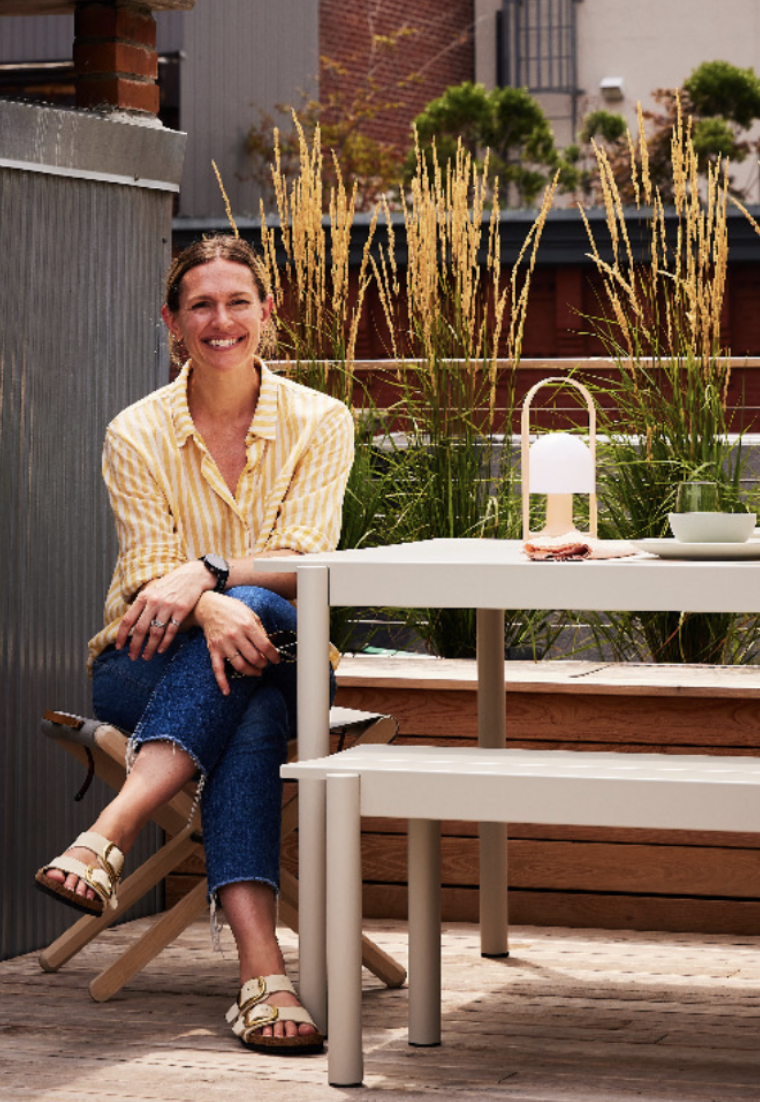
Landscape designer, Katherine "Kat" Aul Cervoni is the founder and principal of Staghorn Living. Kat creates outdoor spaces that become natural extensions of a home’s interior. A member of the Ecological Landscape Alliance and the Association of Professional Landscape Designers, she also mentors young plant enthusiasts and upcoming designers.
2. Mulch the soil
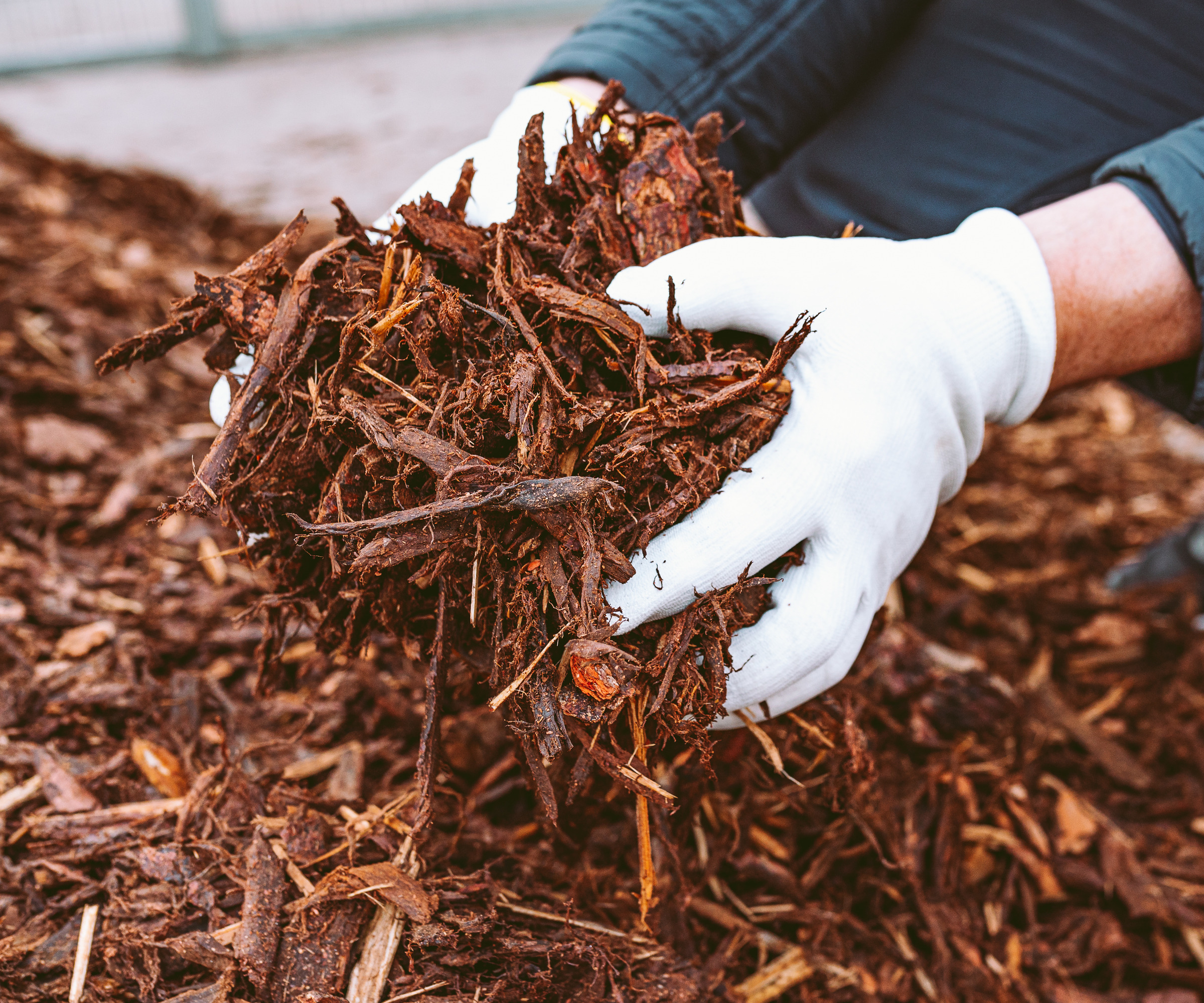
Mulching the soil around your plants is a good habit for most gardeners to get into. It has numerous benefits, from weed suppression in the summer, to adding nutrients, and insulating plant roots against freezing temperatures in the winter.
'Delphiniums have very shallow roots that are especially vulnerable to frost,' explains Kat. 'Without a protective layer of mulch, the freeze-thaw cycle can damage or even kill the crown and roots. This results in poor regrowth or possibly, the plant failing to return in spring.
'Apply a nice layer of mulch, two to three inches deep, around the base of the plant to provide insulation to the roots. Pine bark mulch is my favorite and I use it in all parts of my garden.
'November is typically when I make sure a good layer of mulch is laid throughout the garden. I usually do this after planting bulbs.'
You can create your own mulch with compost or chopped leaves. Many arborists give away wood chip bark for mulch through sites like Get Chip Drop. Alternatively, you can buy also pine straw mulch at Fast-Growing Trees.
3. Water sparingly if you've had no rain
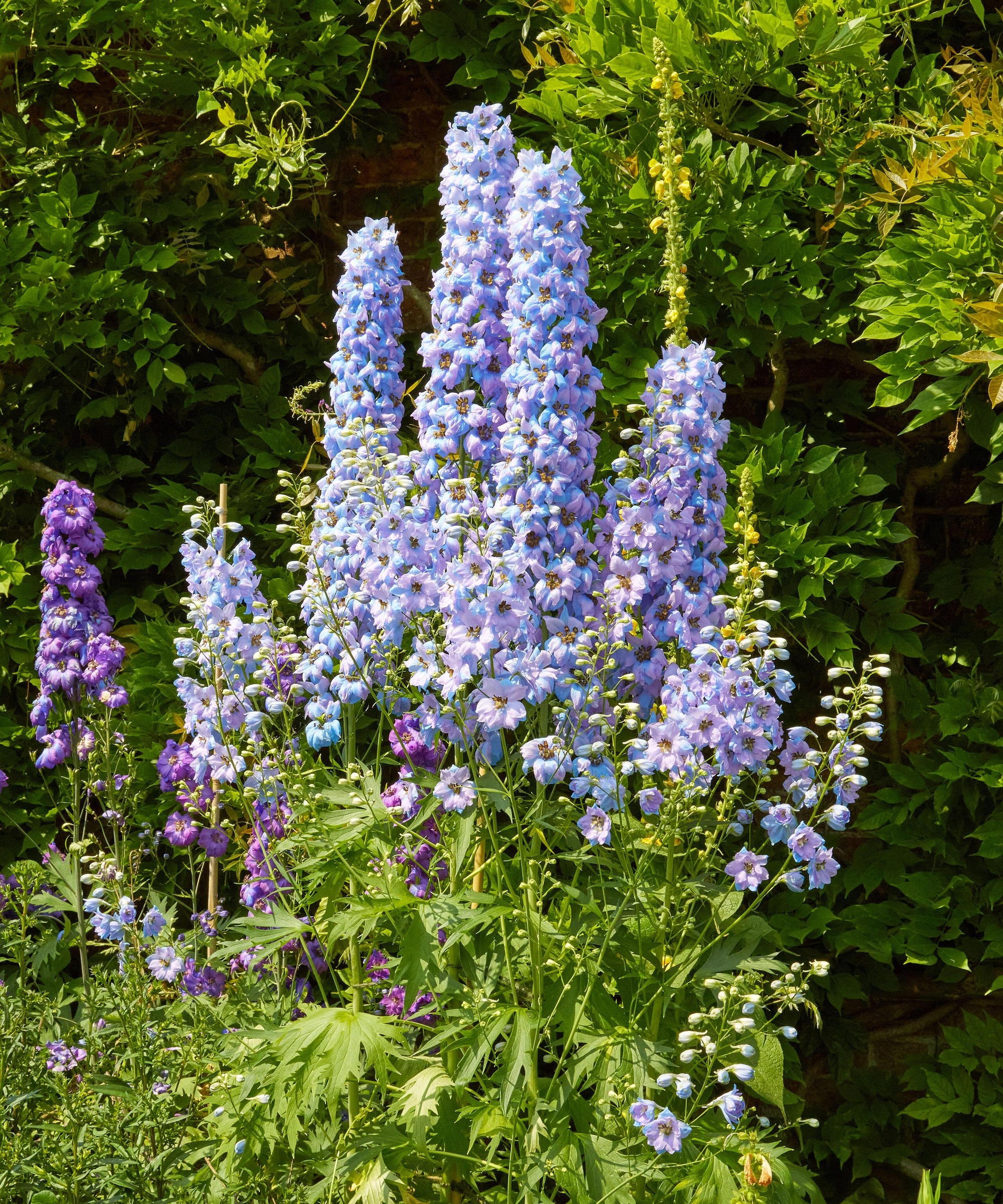
During the summer, as well as providing color and interest in your garden, Delphiniums are wonderful flowers to attract bees and butterflies. For these plants to survive the winter and return to their full glory again in the spring, it may be necessary to water them from time to time, depending on the amount of rainfall in your region.
'An important thing to know about delphiniums is that they like regular moisture but not to be waterlogged,' says Amy Yarger. 'Choosing a sunny, sheltered location with well-draining soil will increase the chances of these perennials living their full 3-5 year lifespan.
'Gardeners should avoid compacting the soil around delphiniums to keep the drainage moving. In areas with dry winters, plan on adding moisture on warm winter days.
'Instead of watering from above, a slow trickle of water from the garden hose at the crown of the plant will provide much needed moisture and avoid creating conditions for fungal diseases that come from overhead spray.'
'Avoid overwatering delphiniums, as standing water can lead to crown and root rot,' says Daniel. 'You can ensure good drainage by planting them slightly raised. Water at the base of the plant to keep foliage dry, which helps prevent disease.'
If you want to grow delphiniums in more colors, and start them from seed in the new year, try these semi-dwarf Delphinium Fantasia Mixed color seeds from Burpee in tones of white, lavender and blue (suitable for zones 3-7).

Daniel graduated from the University of New York with a degree in Ornamental Horticulture in 1990 and graduated from the University of Georgia’s Environmental Design School in 1993 with a bachelor’s degree in Landscape Architecture. His lifetime of experience has developed a "less is more" philosophy and a passion for native planting and sustainable design principles that guide the firm today.
4. How to overwinter delphiniums in containers
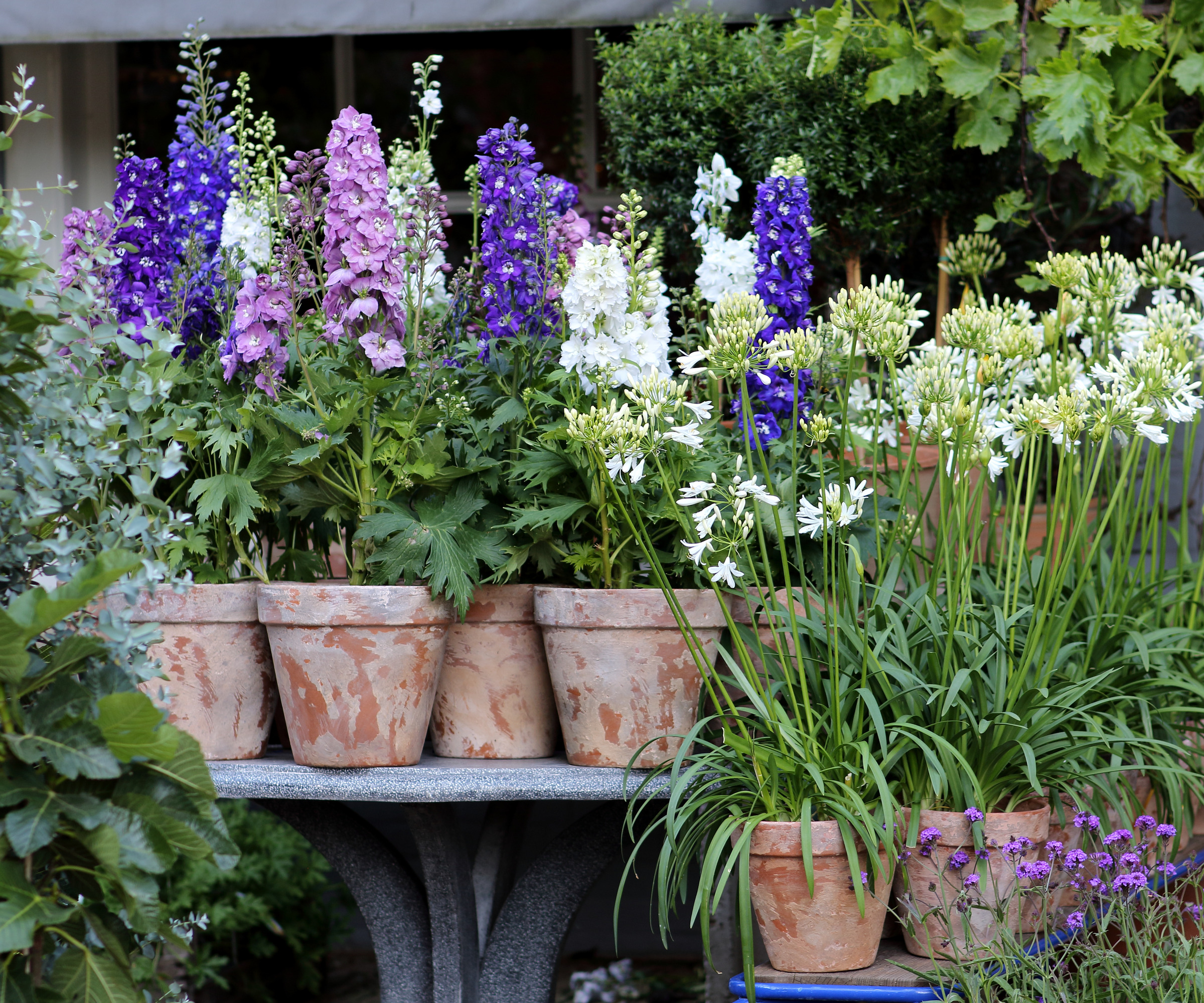
Delphiniums need space to grow so they're not often included in container planting ideas. However, it's not impossible to grow them in pots, particularly some of the smaller varieties. If you do have some delphiniums in pots, they will need to be cut back and mulched too, plus a little extra care.
'If you’ve got delphiniums in pots, ideally move them to a sheltered area like a garage, shed, or an unheated greenhouse,' says Kat. 'This protects them from direct snow, ice, and freezing rain - all of which can create overly damp conditions and lead to rot, which can be a big potential issue.
'In that vein, it’s important to reduce watering in winter to prevent rot for many of your potted plants – water just enough to keep the soil from becoming bone-dry, but avoid soaking them to prevent root rot.'
If your delphiniums have been planted in well-draining soil, in a sunny yet sheltered spot, with enough space to grow, these cottage garden plants should thrive through the spring and summer.
By following the winterizing advice from our gardening experts, these hardy perennials will be able to put down energy through the winter, and return again next year with their vibrant beauty, creating a garden for pollinators and somewhere for you to relax and enjoy.
Sign up to the Homes & Gardens newsletter
Design expertise in your inbox – from inspiring decorating ideas and beautiful celebrity homes to practical gardening advice and shopping round-ups.
Jacky Parker is a freelance lifestyle journalist and writer, producing a wide range of features for magazines and websites. She has written for Homes & Gardens and its sister titles, Livingetc and Country Homes & Interiors for more than 15 years, both as a freelance contributor and staff member, regularly reporting on the latest interiors, gardens and lifestyle inspiration, speaking to experts in their respective fields and discovering the newest tips.
-
 Jeremiah Brent's new NYC-inspired rug collection has got to be the easiest way to bring his modern Manhattan style into your own home
Jeremiah Brent's new NYC-inspired rug collection has got to be the easiest way to bring his modern Manhattan style into your own homeJeremiah Brent has teamed up with Loloi Rugs to create a contemporary collection of home furnishings inspired by his city
By Eleanor Richardson
-
 I tried this one easy dishwasher trick and made the annoying need for manual drying a thing of the past
I tried this one easy dishwasher trick and made the annoying need for manual drying a thing of the pastIf you hate those little pools of water left on your cups and crockery, this towel trick is for you
By Punteha van Terheyden
-
 7 of the fastest growing flowers to plant in spring for early summer blooms
7 of the fastest growing flowers to plant in spring for early summer bloomsSow these seeds now and be greeted with early summer color and repeat blooms in your yard
By Jacky Parker
-
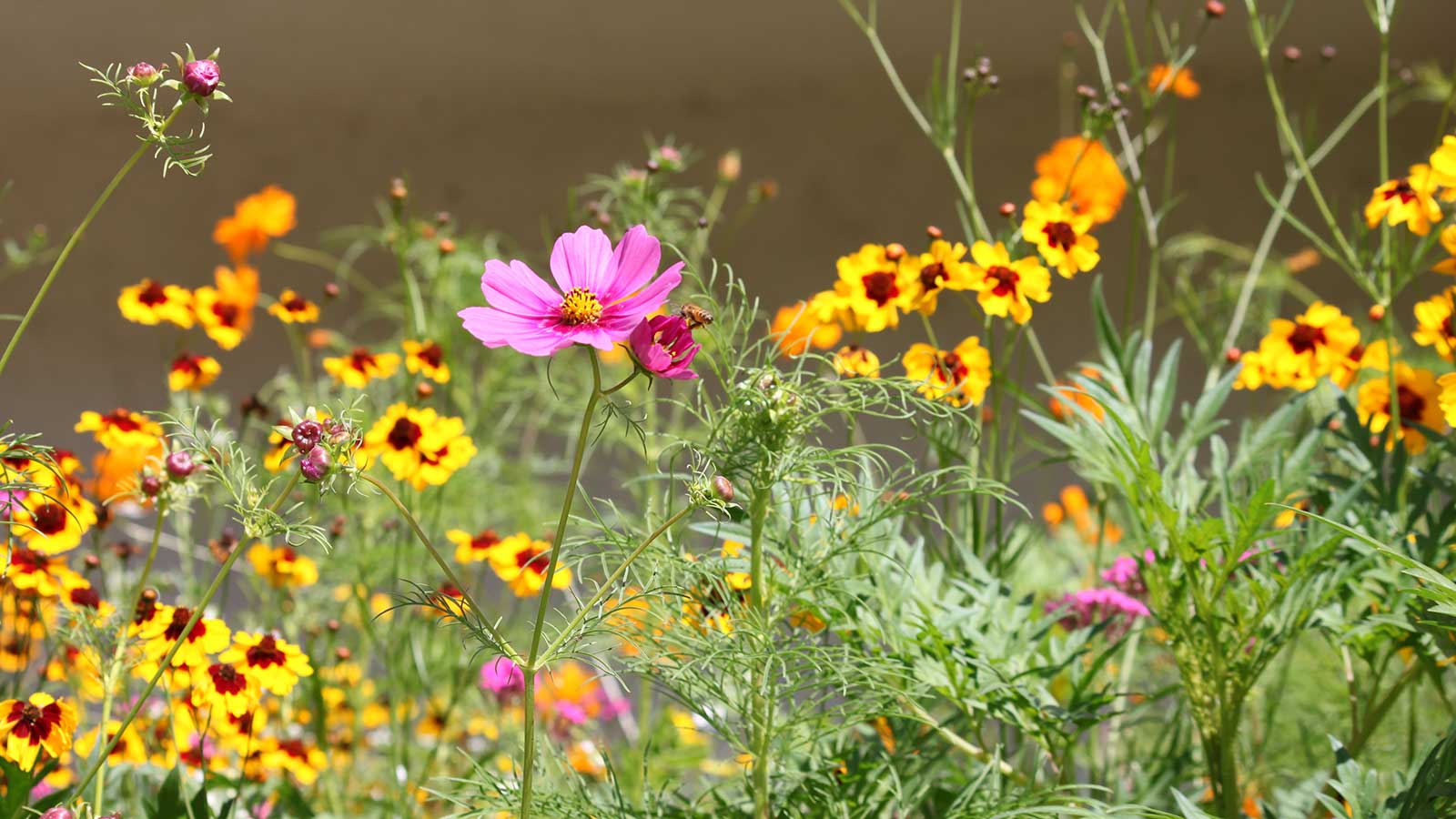 How to design a mini meadow in pots – and welcome birds, bees and butterflies to your urban wildlife garden this summer
How to design a mini meadow in pots – and welcome birds, bees and butterflies to your urban wildlife garden this summerExperts share advice on species recommendations, soil, and types of containers to use for meadow planting
By Holly Crossley
-
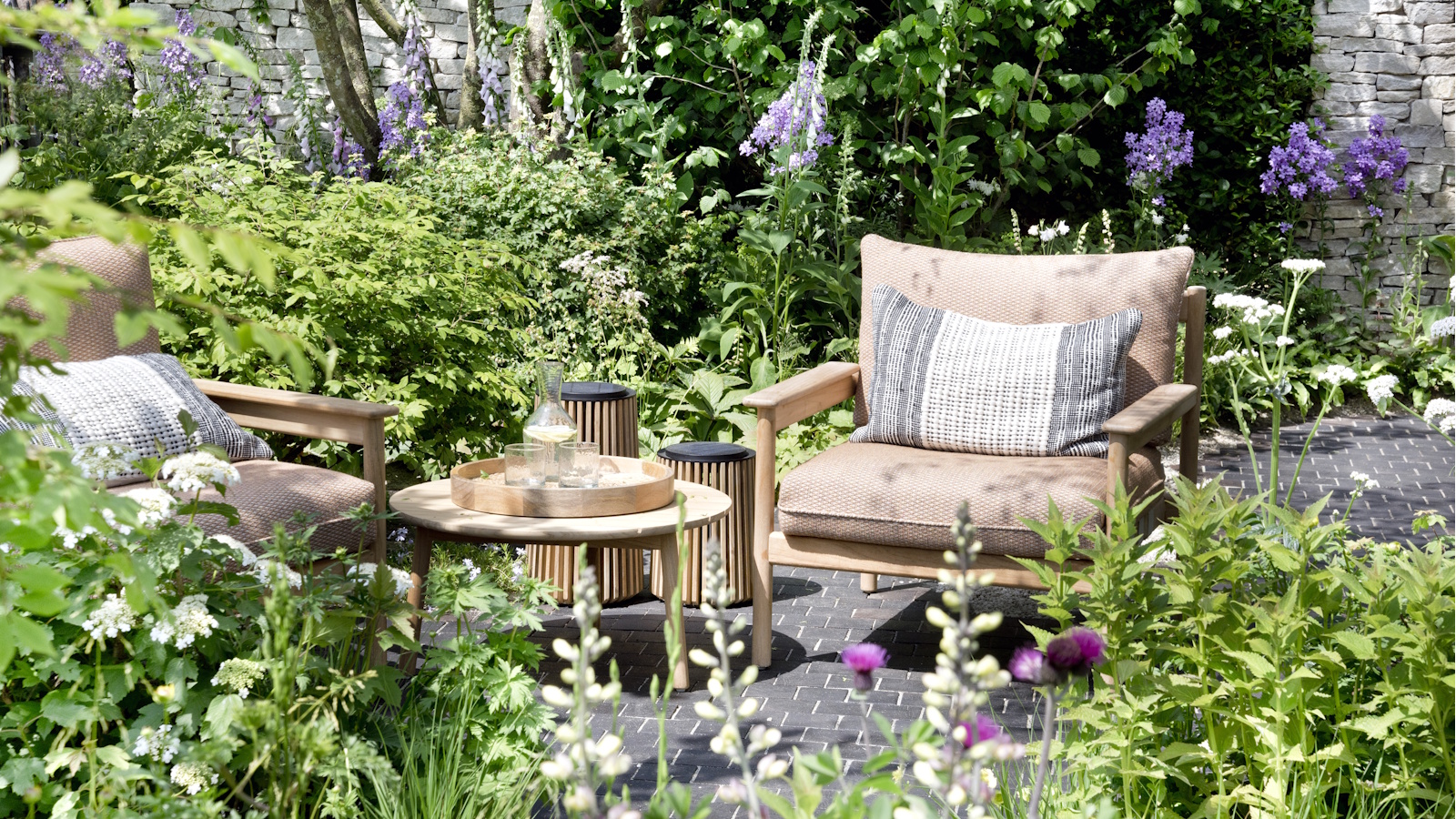 This $20 pop-up greenhouse from ALDI is perfect for small yards – it will turbocharge your tomato harvests this summer
This $20 pop-up greenhouse from ALDI is perfect for small yards – it will turbocharge your tomato harvests this summerEasy to use and compact to store, pop-up greenhouses are ideal for patio or balcony gardeners
By Thomas Rutter
-
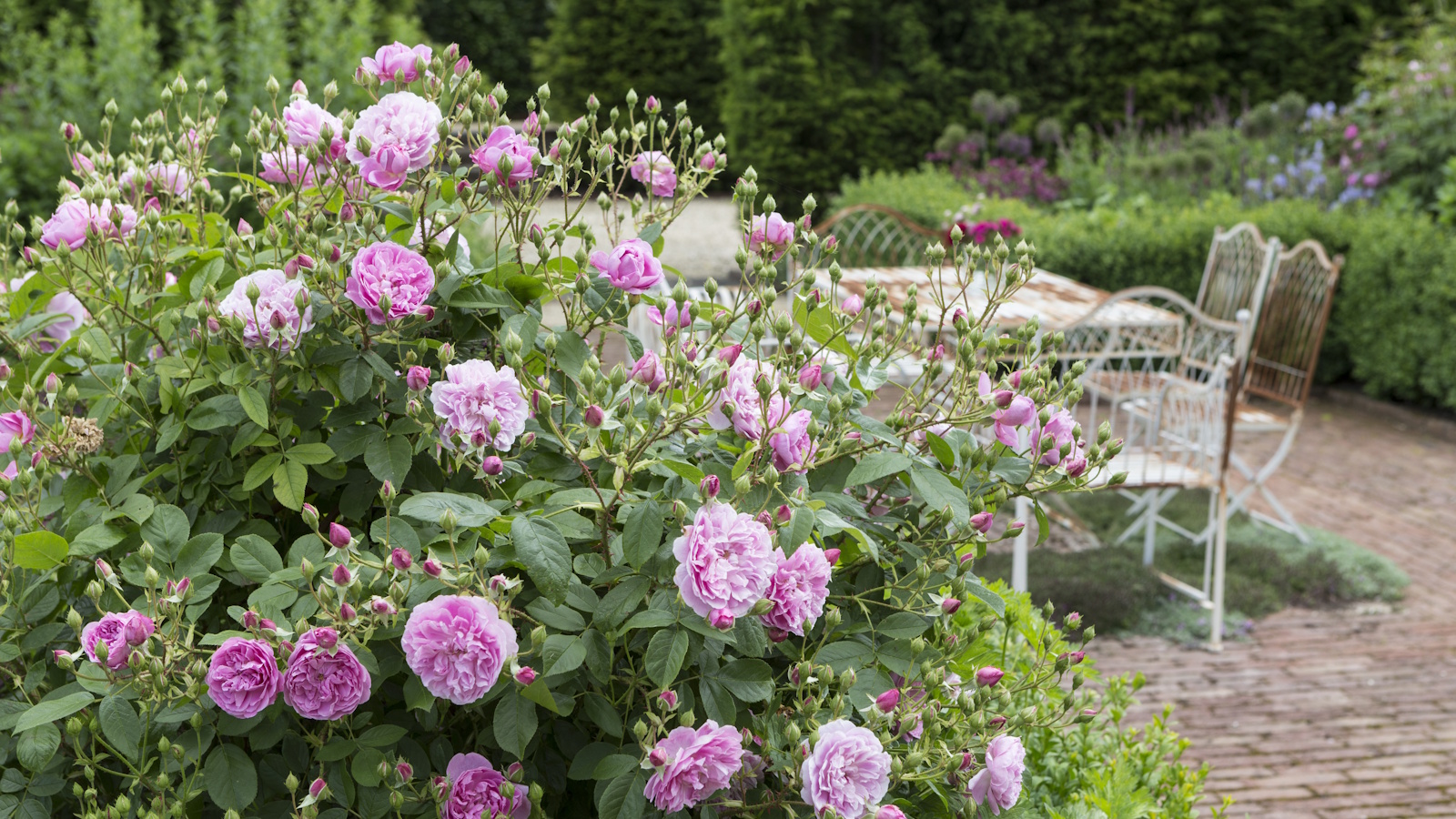 How to weed a garden quickly – professional gardeners reveal the five-minute weeding jobs to do now and get your yard summer-ready
How to weed a garden quickly – professional gardeners reveal the five-minute weeding jobs to do now and get your yard summer-readyShort on time? These time-efficient tasks will keep on top of problem plants
By Thomas Rutter
-
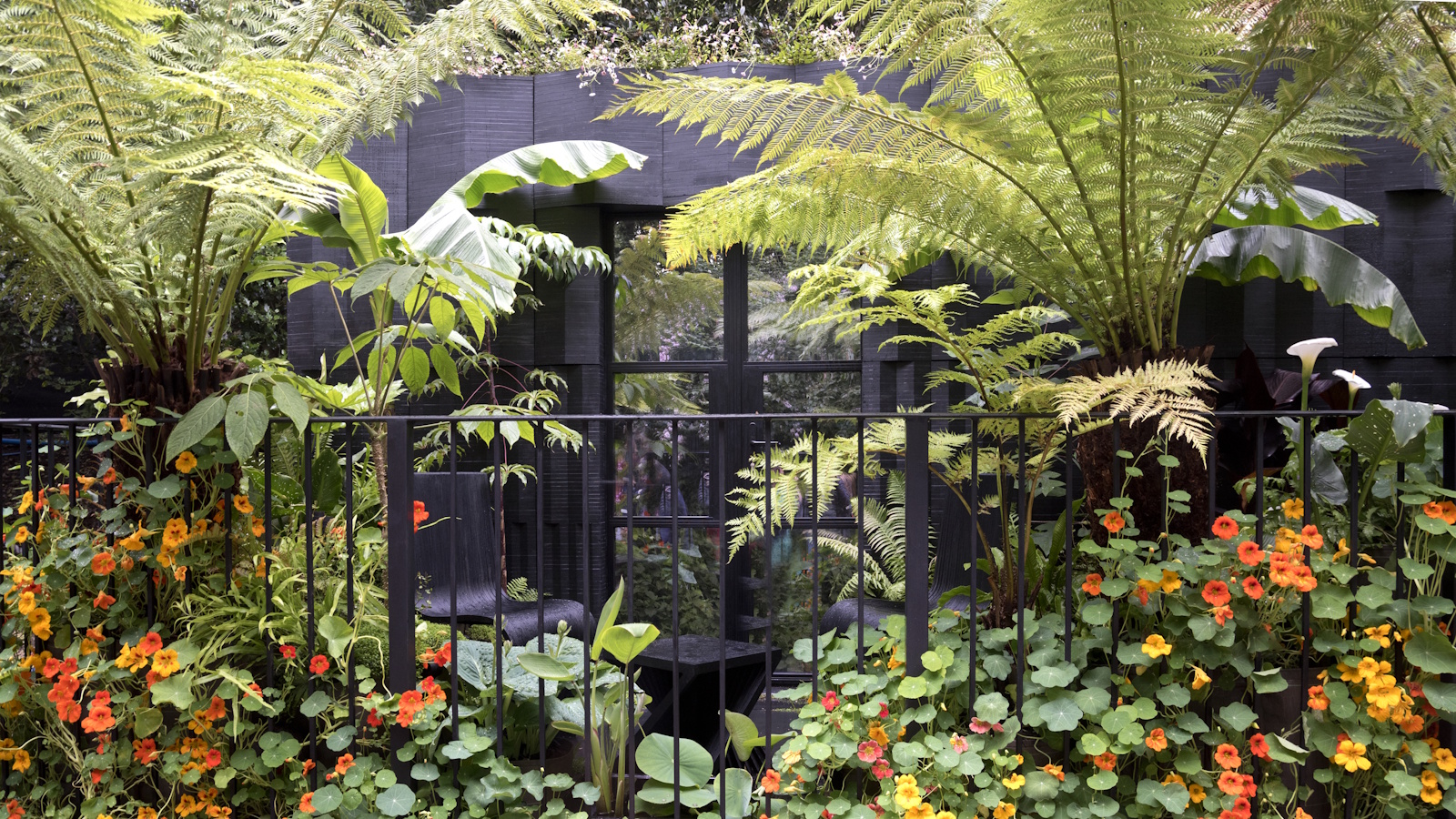 Small yard but want to grow your own crops? This wooden cold frame is 40% off at Wayfair – and it's perfect for tiny patios and apartments
Small yard but want to grow your own crops? This wooden cold frame is 40% off at Wayfair – and it's perfect for tiny patios and apartmentsCold frames are a sensible investment for any gardeners struggling for space on balconies, backyards or patios
By Thomas Rutter
-
 7 native perennials to plant in April – for glorious flowering displays to attract bees, butterflies, and hummingbirds
7 native perennials to plant in April – for glorious flowering displays to attract bees, butterflies, and hummingbirdsDiscover some of the best perennials to plant in April to make your garden a hotspot for wildlife
By Drew Swainston
-
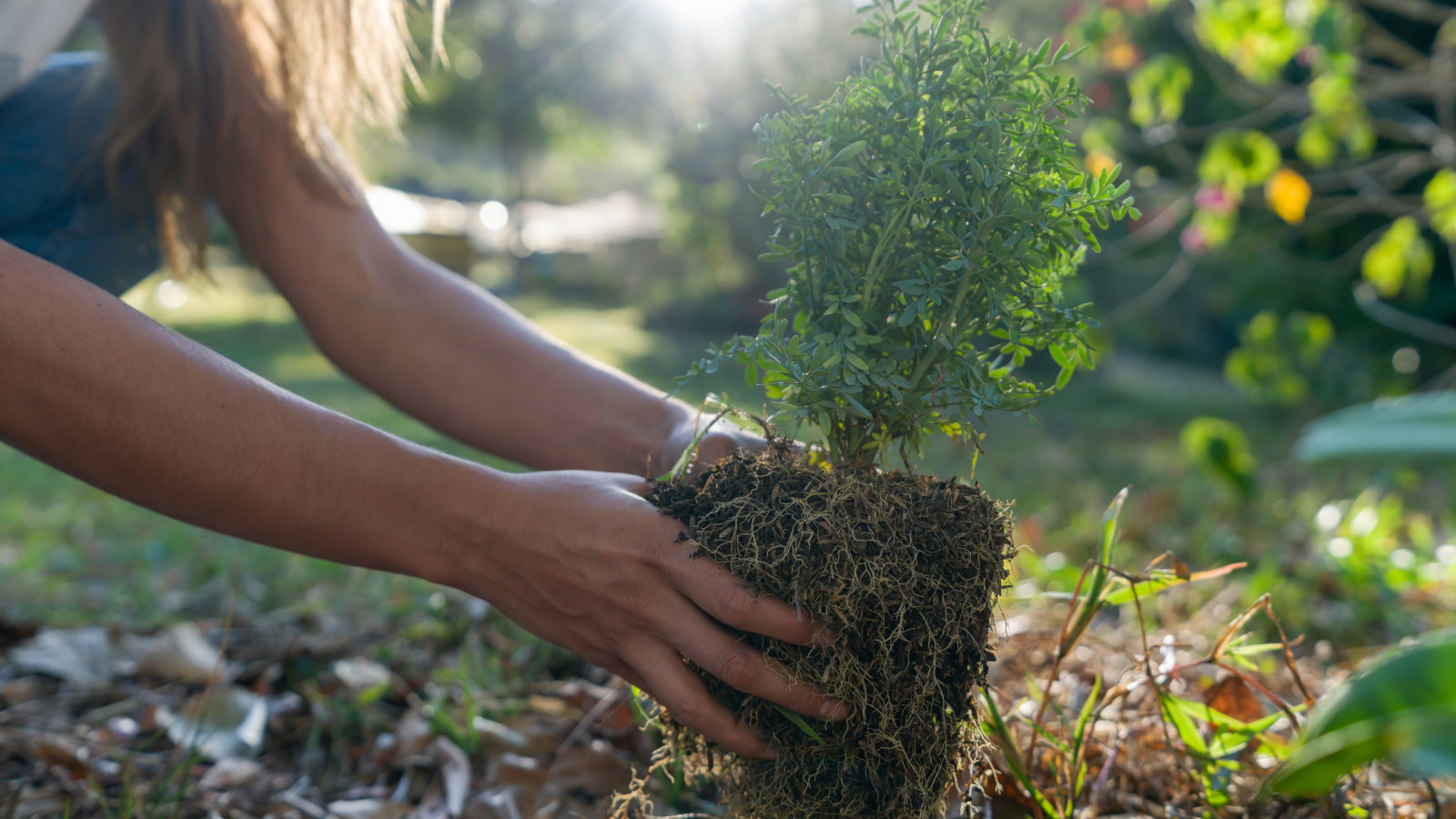 7 shrubs to plant in April to transform beds and borders – including native plants and bushes suitable for dry or wet spots
7 shrubs to plant in April to transform beds and borders – including native plants and bushes suitable for dry or wet spotsThese shrubs can bring flowers, texture, and fragrance, as well as attracting beneficial insects and birds
By Drew Swainston
-
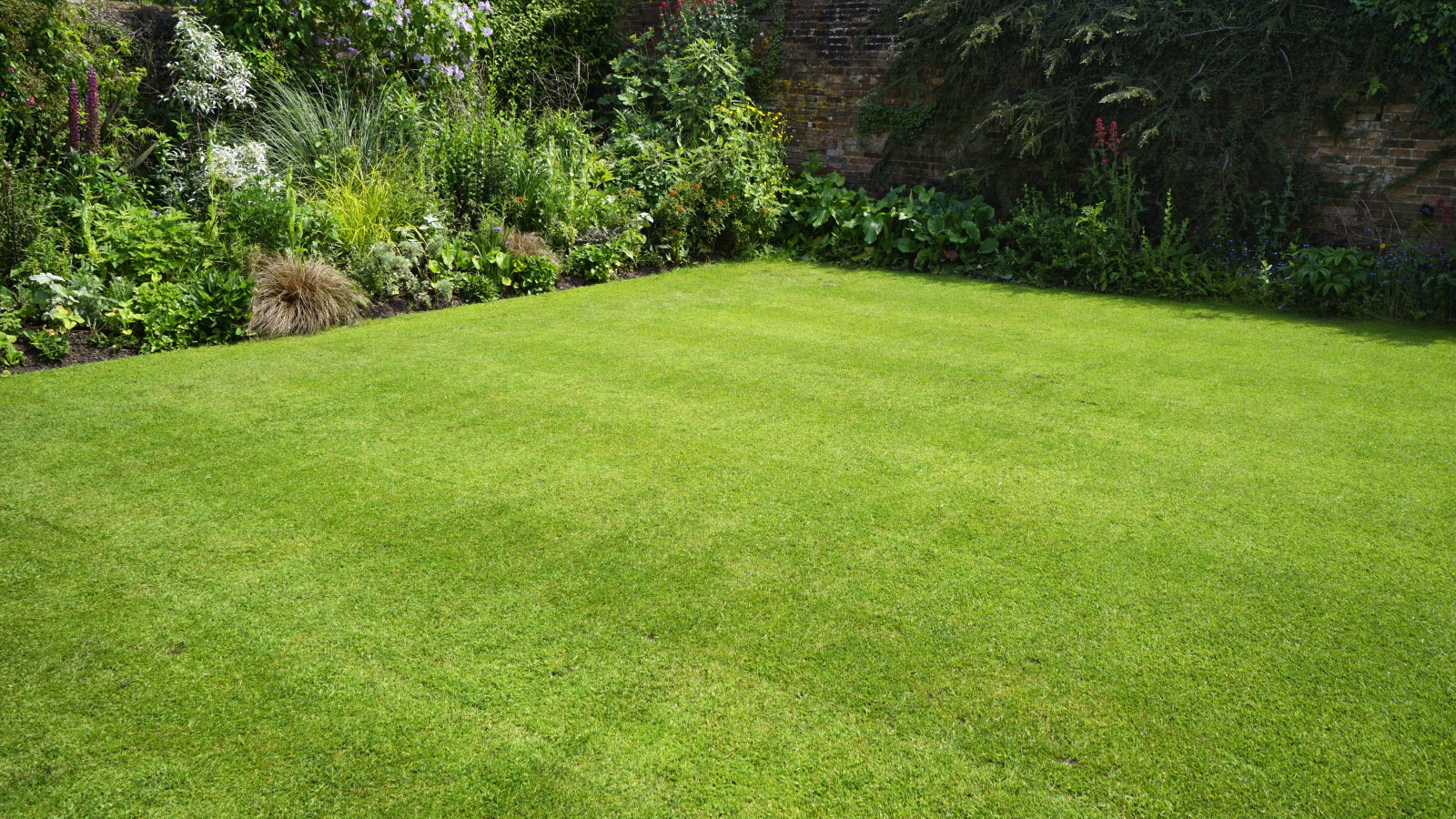 I'm a lawn care expert, and always do these 7 jobs in April to ensure thick, green grass all summer long
I'm a lawn care expert, and always do these 7 jobs in April to ensure thick, green grass all summer longTransform your lawn with these simple yet highly effective April lawn care tasks
By Drew Swainston